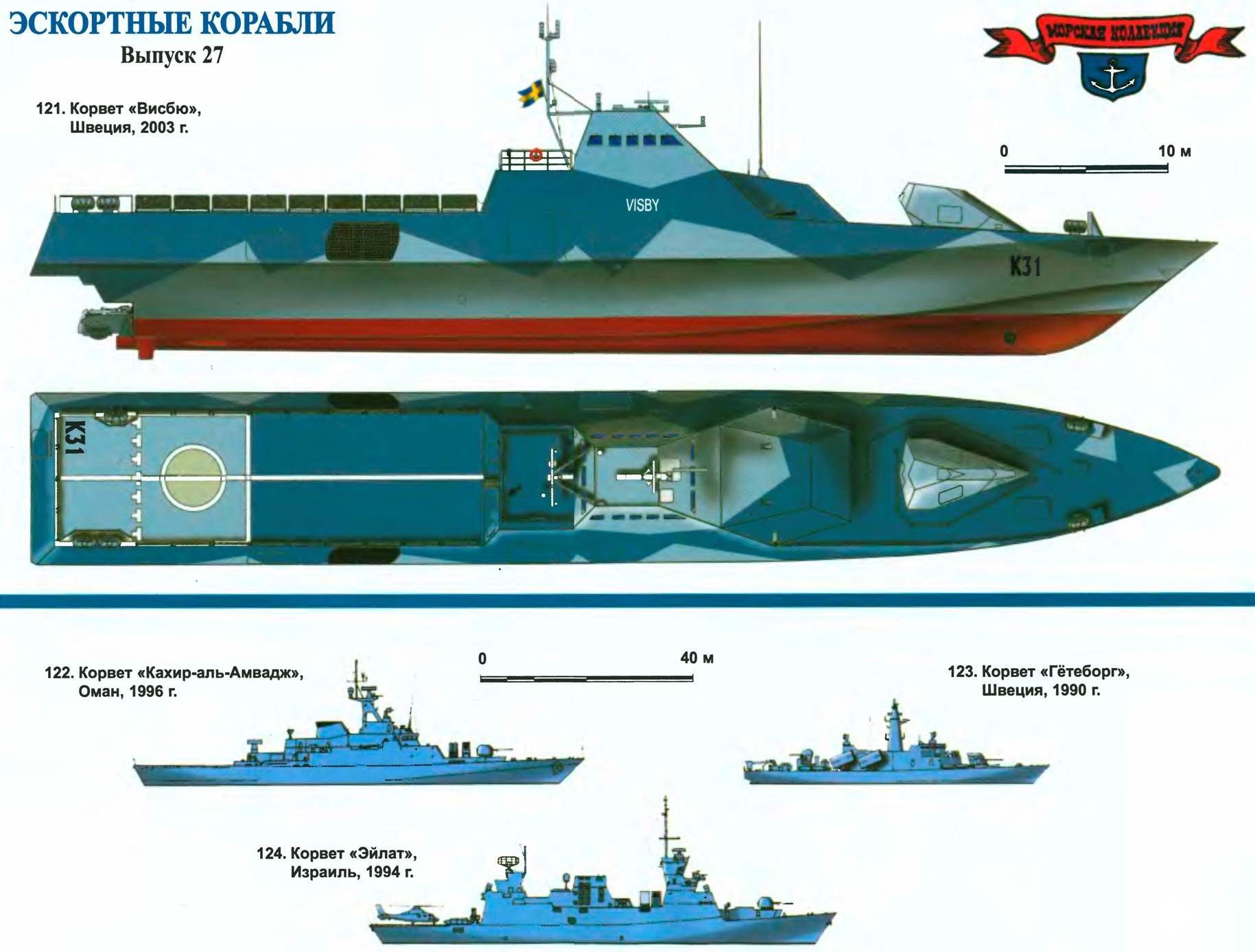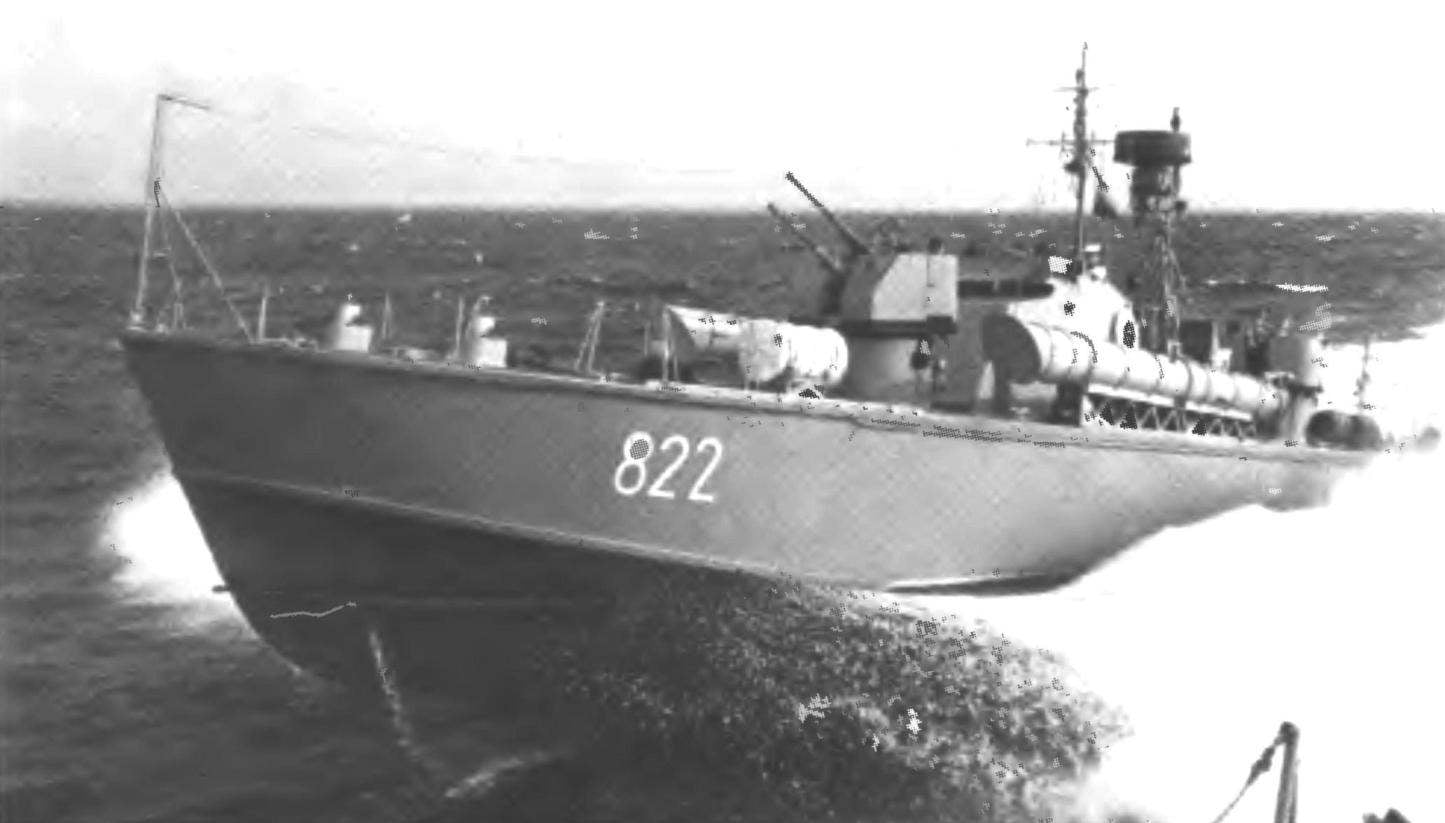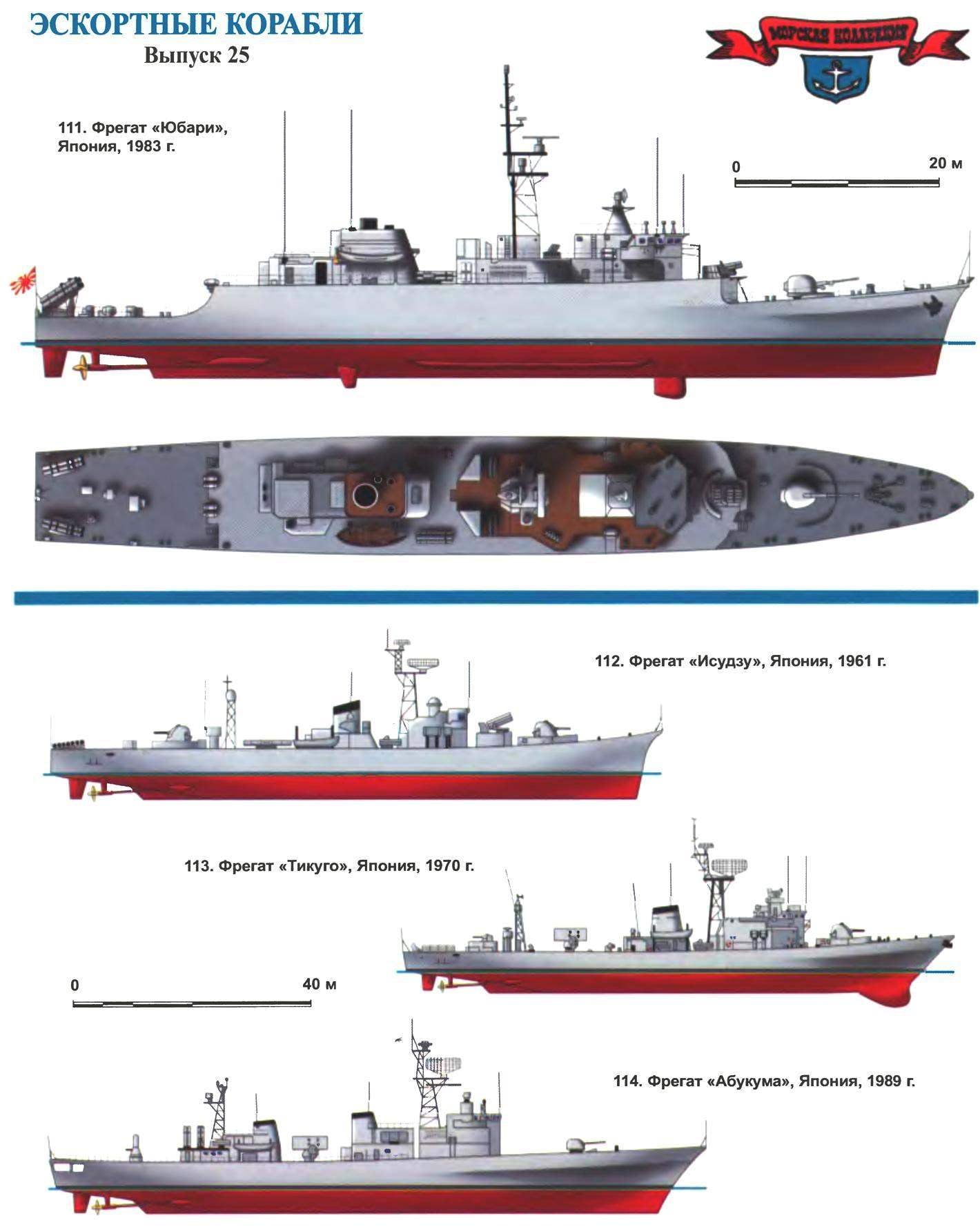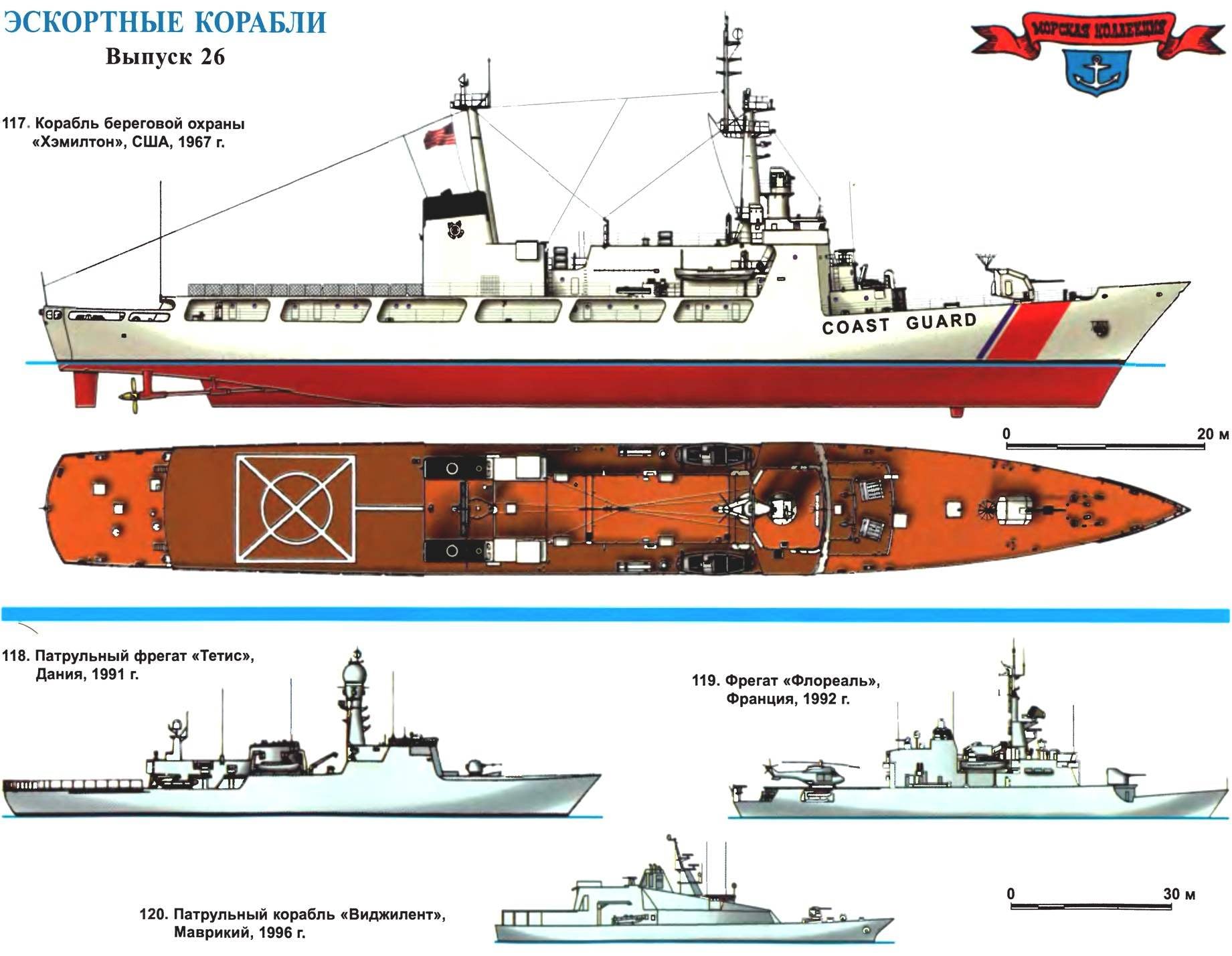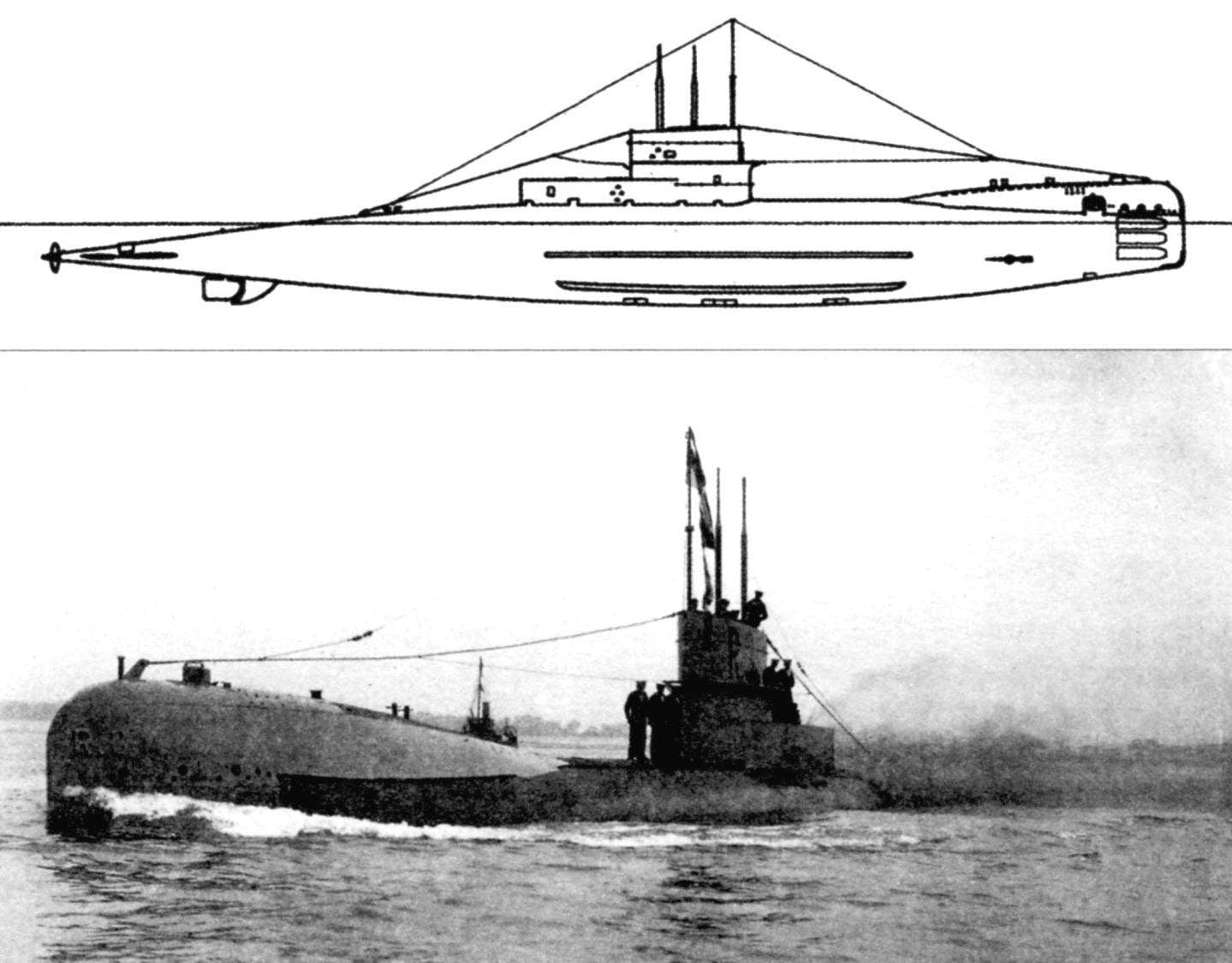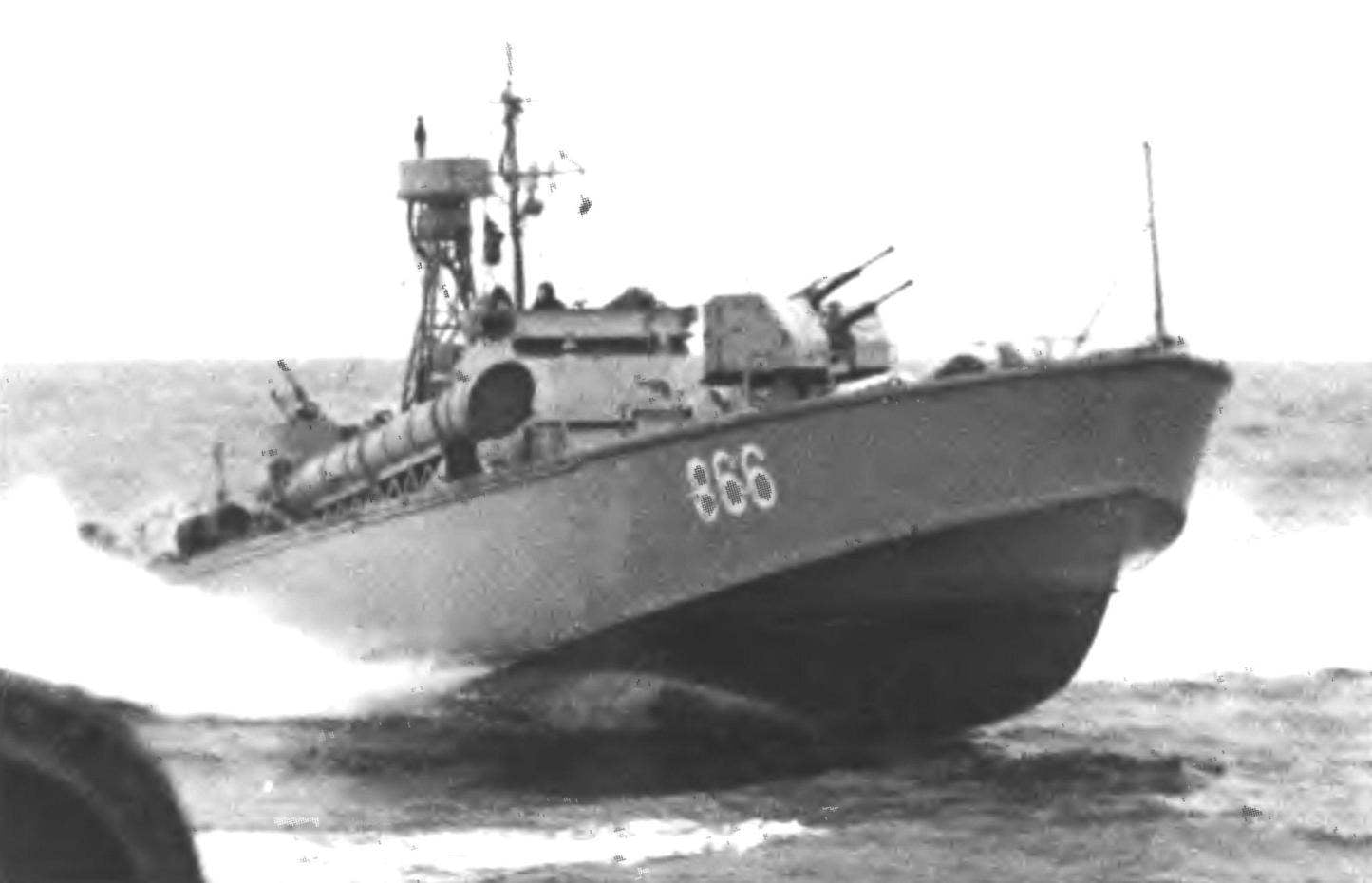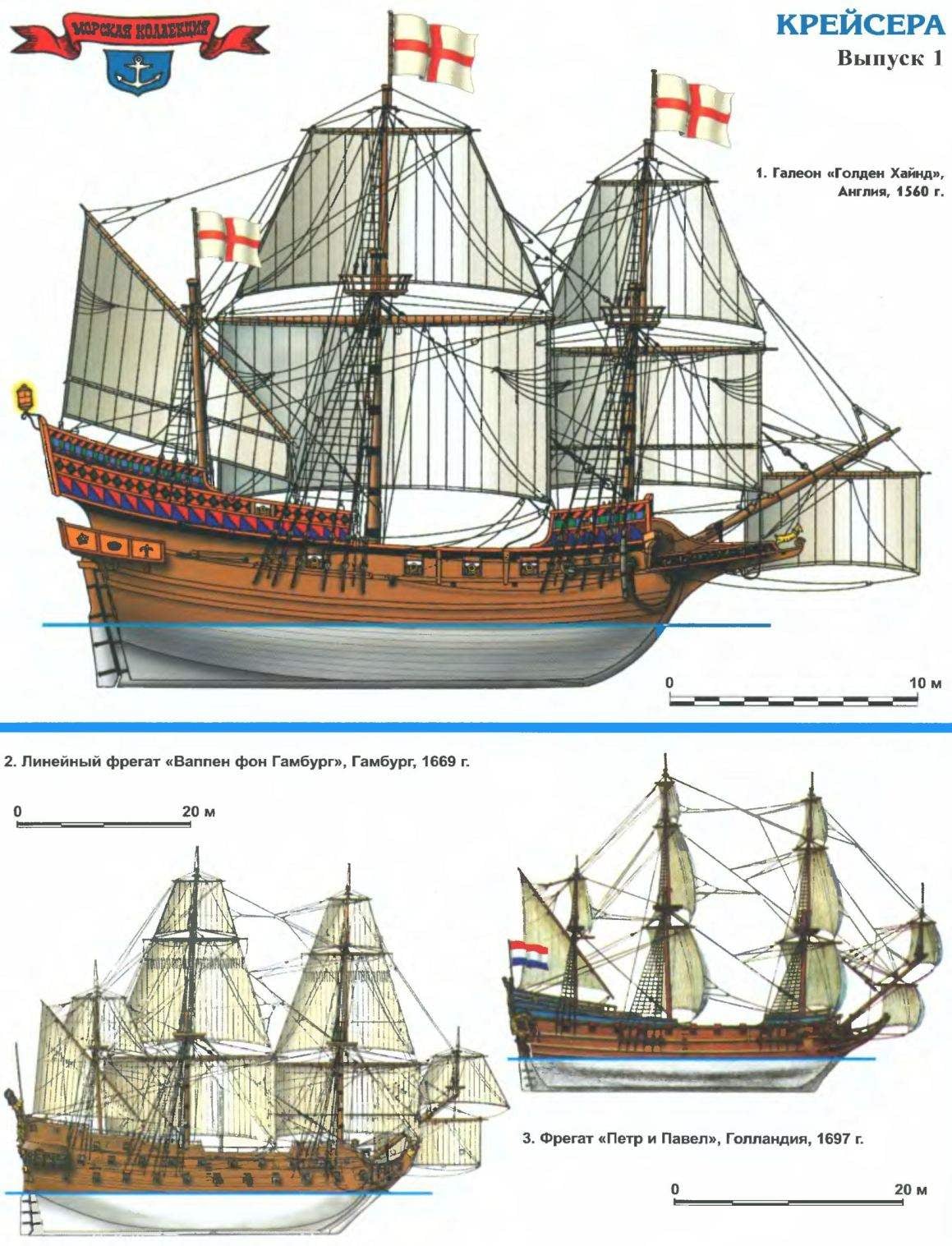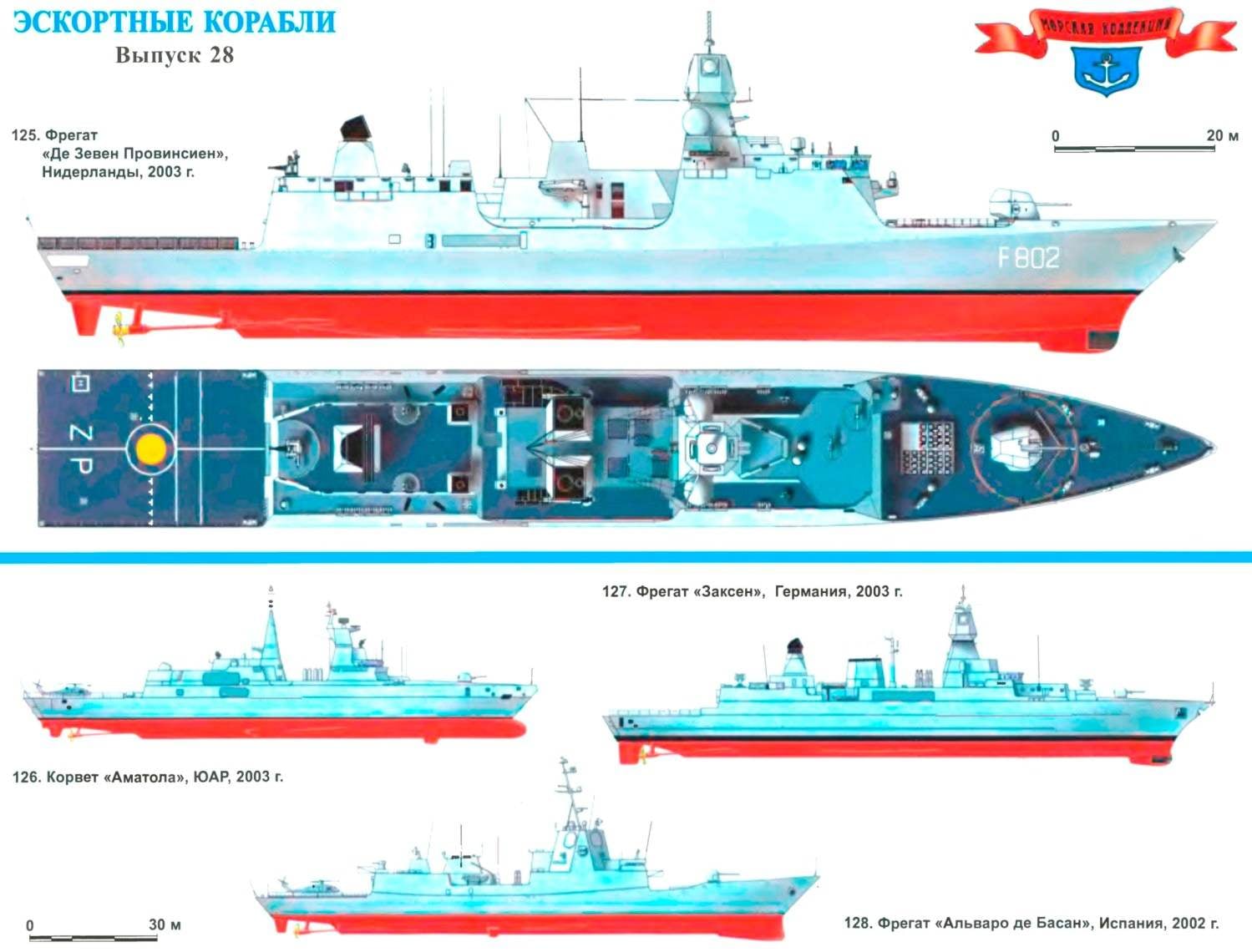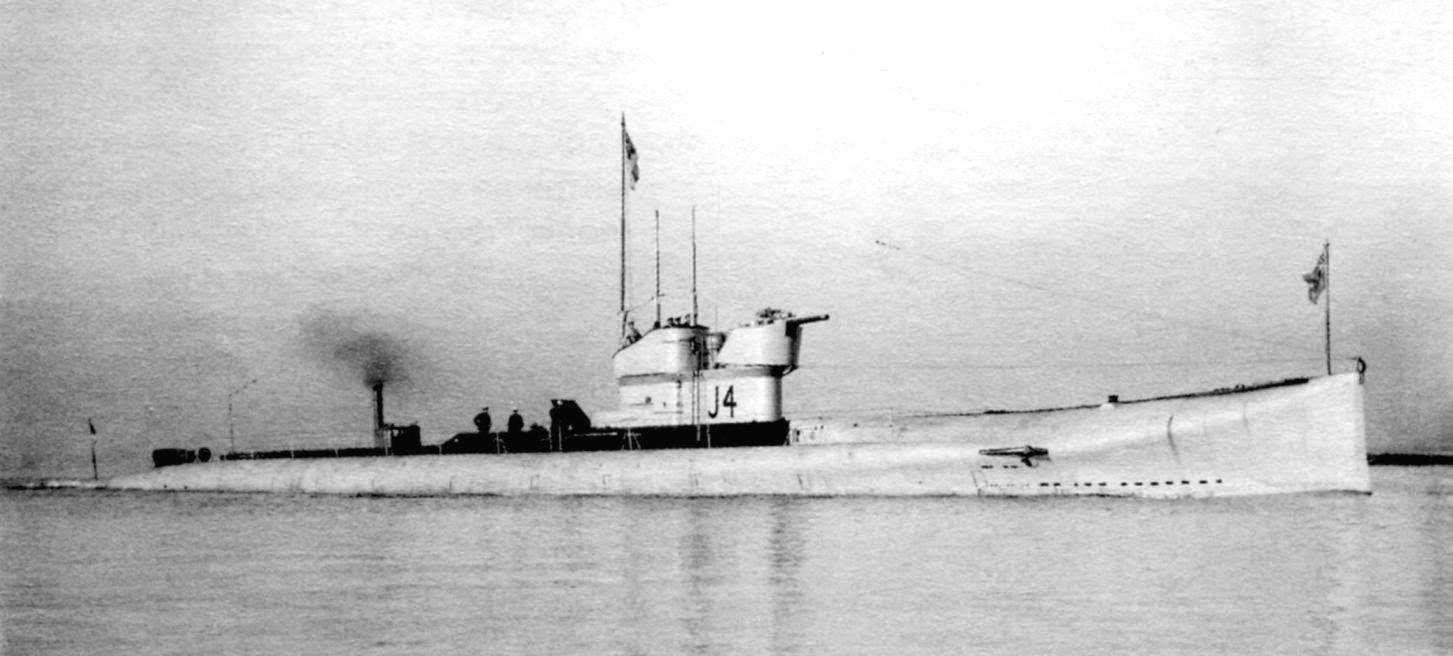 For several decades the Soviet patrol ships (TFR), formally considered as analogues of foreign frigates and corvettes, it was actually the destroyers — shock military units near the sea area. In fact, their successors and projects 35 159 focused on the fight against submarines, kept many of the “Menomonie” features: the same high speed, the same torpedo as the main weapon, the same “squat” silhouette with minimum add-ons… However, the emergence of the US nuclear submarines with ballistic missiles forced the Soviet Union to reconsider priorities.
For several decades the Soviet patrol ships (TFR), formally considered as analogues of foreign frigates and corvettes, it was actually the destroyers — shock military units near the sea area. In fact, their successors and projects 35 159 focused on the fight against submarines, kept many of the “Menomonie” features: the same high speed, the same torpedo as the main weapon, the same “squat” silhouette with minimum add-ons… However, the emergence of the US nuclear submarines with ballistic missiles forced the Soviet Union to reconsider priorities.
Marine
COMPACTNESS OR VERSATILITY?
 The idea to create a small but powerfully armed ship fired the minds of generations of admirals and engineers shipbuilders. And this is understandable: the fact that a small ship is cheaper great, for a long time it was considered axiomatic. So, for the same money marine budget could build a more powerful and numerous fleet. In practice, however, the attempt to implement this plan rarely lead to positive results. Overloaded heavy weapons compact boat, usually worked malamerenda, cramped, had insufficient cruising range and inferior to their larger brethren in survivability… all The more so as the steady appreciation of e-filling and missile weapons saving on steel box was quite unjustified. It would seem that the enthusiasm for “minimalism” in the military shipbuilding should finally disappear.
The idea to create a small but powerfully armed ship fired the minds of generations of admirals and engineers shipbuilders. And this is understandable: the fact that a small ship is cheaper great, for a long time it was considered axiomatic. So, for the same money marine budget could build a more powerful and numerous fleet. In practice, however, the attempt to implement this plan rarely lead to positive results. Overloaded heavy weapons compact boat, usually worked malamerenda, cramped, had insufficient cruising range and inferior to their larger brethren in survivability… all The more so as the steady appreciation of e-filling and missile weapons saving on steel box was quite unjustified. It would seem that the enthusiasm for “minimalism” in the military shipbuilding should finally disappear.
A LARGE TORPEDO
 As a result of mass repressions of 1937 -1938. considerably thinned the ranks of skilled workers, research institutions, including creating new military equipment. With the acute shortage of professional personnel in the USSR in the ongoing struggle “enemies of the people” the country could be without leading experts. In September 1938 at the suggestion of people’s Commissar of internal Affairs USSR L. P. Beria in the NKVD Division was established special design Bureau, renamed in 1939 to the Special technical Bureau of the NKVD of the USSR From July 1941 until its dissolution in may 1953 it was called the 4th special Department of the NKVD (since 1946 — MGB) of the USSR. The main objectives of 4-th special Department were: the use of inmates specialists to perform research and design works on creation of new types of military aircraft, aircraft engines and engines of naval vessels, artillery and ammunition, chemical means of attack and defence, and the procurement of radio communications.
As a result of mass repressions of 1937 -1938. considerably thinned the ranks of skilled workers, research institutions, including creating new military equipment. With the acute shortage of professional personnel in the USSR in the ongoing struggle “enemies of the people” the country could be without leading experts. In September 1938 at the suggestion of people’s Commissar of internal Affairs USSR L. P. Beria in the NKVD Division was established special design Bureau, renamed in 1939 to the Special technical Bureau of the NKVD of the USSR From July 1941 until its dissolution in may 1953 it was called the 4th special Department of the NKVD (since 1946 — MGB) of the USSR. The main objectives of 4-th special Department were: the use of inmates specialists to perform research and design works on creation of new types of military aircraft, aircraft engines and engines of naval vessels, artillery and ammunition, chemical means of attack and defence, and the procurement of radio communications.THE EASTERN “MARTIAL ARTS”
 A crushing defeat of Japan in 1945 radically changed the geopolitical situation in the far East, however, does not make this part of the globe calm. A series of bloody wars in China, Indochina and Korea led to the split of Nations and the emergence of new tensions. All this occurred against the background of confrontation between the two superpowers — the USSR and the USA trying to engage the warring regimes in its orbit. So in the camp of the allies of Washington and its former enemy Japan, and longtime enemies of the past — South Korea and Taiwan.
A crushing defeat of Japan in 1945 radically changed the geopolitical situation in the far East, however, does not make this part of the globe calm. A series of bloody wars in China, Indochina and Korea led to the split of Nations and the emergence of new tensions. All this occurred against the background of confrontation between the two superpowers — the USSR and the USA trying to engage the warring regimes in its orbit. So in the camp of the allies of Washington and its former enemy Japan, and longtime enemies of the past — South Korea and Taiwan.
OCEAN PATROL
 It is well known that warships is not only a means of waging war at sea. And in peacetime the Navy has to solve a wide range of tasks — carry out protection of territorial waters to combat violators of the state border, to carry out diplomatic missions, to “show the flag” and demonstrate the power of his country in “hot spots” of the planet.
It is well known that warships is not only a means of waging war at sea. And in peacetime the Navy has to solve a wide range of tasks — carry out protection of territorial waters to combat violators of the state border, to carry out diplomatic missions, to “show the flag” and demonstrate the power of his country in “hot spots” of the planet.
CREATIVE ECCENTRICITIES
 In the last issue we talked about some experiments with the construction of submarines made by the British Admiralty during the First world war. It should be noted, is not the most extreme and interesting. Now it is the turn for the most curious products of the “enlightened sailors”. Of course, experimental submarines periodically appeared in most major Maritime powers. But, perhaps, only Britain allowed itself to carry out such impressive “experiments” on a large scale. Despite the obvious dubiousness of many ideas, they did not check on individual units, and immediately launched into a series of, sometimes very significant. As a result, the Royal Navy received the whole batch of submarines with which the admirals just didn’t know what to do. Cost this approach a fair amount of money, but while the Empire could afford such a luxury.
In the last issue we talked about some experiments with the construction of submarines made by the British Admiralty during the First world war. It should be noted, is not the most extreme and interesting. Now it is the turn for the most curious products of the “enlightened sailors”. Of course, experimental submarines periodically appeared in most major Maritime powers. But, perhaps, only Britain allowed itself to carry out such impressive “experiments” on a large scale. Despite the obvious dubiousness of many ideas, they did not check on individual units, and immediately launched into a series of, sometimes very significant. As a result, the Royal Navy received the whole batch of submarines with which the admirals just didn’t know what to do. Cost this approach a fair amount of money, but while the Empire could afford such a luxury.
A LARGE TORPEDO
 (The end. Beginning at No. 9 in’05). In may 1953, in connection with the liquidation of the 4th special Department (former MGB, and now the Ministry of internal Affairs of the USSR), OKB-5 was closed, and its civilian employees became part of the SKB-5 for the design of long-range boats was established on 22 October 1949 at plant No. 5 Minsudprom of the USSR. Here they continued further development of the boat of the project 183, including in the directions laid down in the OKB-5 MGB.
(The end. Beginning at No. 9 in’05). In may 1953, in connection with the liquidation of the 4th special Department (former MGB, and now the Ministry of internal Affairs of the USSR), OKB-5 was closed, and its civilian employees became part of the SKB-5 for the design of long-range boats was established on 22 October 1949 at plant No. 5 Minsudprom of the USSR. Here they continued further development of the boat of the project 183, including in the directions laid down in the OKB-5 MGB.
HARBINGERS CRUISERS
 Cruiser… If you ask a contemporary, not too close to the history of the Navy with what he associated that word is likely to hear in response the power and speed to Do in the last decades of its existence, the cruiser has firmly taken the place of the main class of surface warships, inferior in strength and value, except that the aircraft carriers. But the path to this state of was very long and difficult.
Cruiser… If you ask a contemporary, not too close to the history of the Navy with what he associated that word is likely to hear in response the power and speed to Do in the last decades of its existence, the cruiser has firmly taken the place of the main class of surface warships, inferior in strength and value, except that the aircraft carriers. But the path to this state of was very long and difficult.
SHIPS OF THE THIRD MILLENNIUM
 The launching of another ship of the MEKO family of corvettes “Amatola” for the Navy of South Africa — at first glance, were not fraught with anything unusual. Nevertheless, this event, held on 7 June 2002 at the Hamburg shipyard “Blohm und Voss”, attracted attention of specialists from different countries of the world And it was not only that the new draft MEKO-A200 predicted a great future in the international market for naval armaments of the South African Corvette was noteworthy in several respects, clearly describing trends in modern shipbuilding.
The launching of another ship of the MEKO family of corvettes “Amatola” for the Navy of South Africa — at first glance, were not fraught with anything unusual. Nevertheless, this event, held on 7 June 2002 at the Hamburg shipyard “Blohm und Voss”, attracted attention of specialists from different countries of the world And it was not only that the new draft MEKO-A200 predicted a great future in the international market for naval armaments of the South African Corvette was noteworthy in several respects, clearly describing trends in modern shipbuilding.
THE CURVING BRANCHES OF SIR KISA
 We left Britain in the midst of the “great war” as it was called by the British the First world war. Pretty pinched with German “u-bots” merchant fleet. But with huge military, which now has quite a prominent role began to play and the submarine. And the variety: the richest Empire could afford to actively experiment with a new kind of naval forces, which has gradually become almost a favorite.
We left Britain in the midst of the “great war” as it was called by the British the First world war. Pretty pinched with German “u-bots” merchant fleet. But with huge military, which now has quite a prominent role began to play and the submarine. And the variety: the richest Empire could afford to actively experiment with a new kind of naval forces, which has gradually become almost a favorite.

